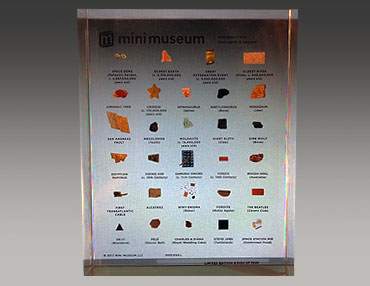
Mini Museum 3
Fairfax, Virginia
2017.
The oldest museum was one established in Iraq around 500 BC. However, the classical museum began in the late 1500s when private collections of fossils, stones, stuffed animals, miniatures, and other curiosities were assembled by wealthy individuals. These intriguing accumulations were usually displayed within special rooms in their homes.
It was Irish collector and naturalist Sir Hans Sloane who provided the material for the first public museum. After his death, he had donated his vast collections of curiosities to the City of London. In 1759, the British Museum opened its doors to the common man.
Both small and prestigious museums opened in many countries throughout the 19th and 20th centuries. Most specialized in areas like sculpture, art, science and natural history. As interest in visiting museums waned, touring exhibitions from other museums helped generate traffic. However, the vast internet of today provides the inquisitive mind an alternative to wandering the halls of conventional museums.
Entrepreneur Hans Fex was inspired to create small museums that anyone could own and study. An avid collector of dinosaur fossils, meteorites, and other intriguing artifacts, Mr. Fex assembled his prototype museum of small artifacts that was sealed in a clear block of Lucite. In 2014, he solicited support on web-based Kickstarter to finance his idea. His request for $38,000 to fund the assembly of a few hundred ‘mini museums’ was quickly met and surpassed. By the end of Mr. Fex’s campaign, 5,030 backers had pledged $1.22 million for his launch.
Since then, Mr. Fex and his team have created additional runs of Mini Museums, each unique and inspiring. Included with the display is a small bound volume containing detailed information on the more than two dozen artifacts and their sources.
The two specimens acquired by the museum are his third and fourth iteration of the Mini Museum, purchased through the Mini Museum website.